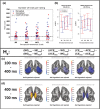Task requirements affect the neural correlates of consciousness
- PMID: 36086829
- PMCID: PMC9827982
- DOI: 10.1111/ejn.15820
Task requirements affect the neural correlates of consciousness
Abstract
In the search for the neural correlates of consciousness, it is often assumed that there is a stable set within the relevant sensory modality. Within the visual modality, the debate has centred upon whether frontal or occipital activations are the best predictors of perceptual awareness. Although not accepted by all as definitive evidence, no-report and decoding studies have indicated that occipital activity is the most consistently correlated with perceptual awareness whereas frontal activity might be closely related to aspects of cognition typically related to reports. However, perception is rarely just passive perception of something, but more or less always perception for something. That is, the task at hand for the perceiver may influence what is being perceived. This suggests an alternative view: that consciousness is not one specific 'function' that can be localized consistently to one area or event-related component and that the specific attributes of the neural correlates of consciousness depend on the task at hand. To investigate whether and how tasks may influence the neural correlates of consciousness, we here contrasted two tasks, a perceptual task and a conceptual task, using identical stimuli in both tasks. Using magnetoencephalography, we found that the perceptual task recruited more occipital resources than the conceptual task. Furthermore, we found that between the two conditions, the amount of frontal resources recruited differed between different gradations of perceptual awareness partly in an unexpected manner. These findings support a view of task affecting the neural correlates of consciousness.
Keywords: consciousness; magnetoencephalography; perception; vision.
© 2022 The Authors. European Journal of Neuroscience published by Federation of European Neuroscience Societies and John Wiley & Sons Ltd.
Conflict of interest statement
The authors declare no conflicts of interest.
Figures




References
-
- Baars, B. J. (1988). A cognitive theory of consciousness. Cambridge University Press.
-
- Bates, D. , Mächler, M. , Bolker, B. , & Walker, S. (2014). Fitting linear mixed‐effects models using lme4. arXiv:14065823 [stat]. http://arxiv.org/abs/1406.5823
-
- Boly, M. , Massimini, M. , Tsuchiya, N. , Postle, B. R. , Koch, C. , & Tononi, G. (2017). Are the neural correlates of consciousness in the front or in the back of the cerebral cortex? Clinical and neuroimaging evidence. The Journal of Neuroscience, 37, 9603–9613. 10.1523/JNEUROSCI.3218-16.2017 - DOI - PMC - PubMed
-
- Breitmeyer, B. G. , & Öğmen, H. (2006). Visual masking: Time slices through conscious and unconscious vision. Oxford University Press.
Publication types
MeSH terms
LinkOut - more resources
Full Text Sources

